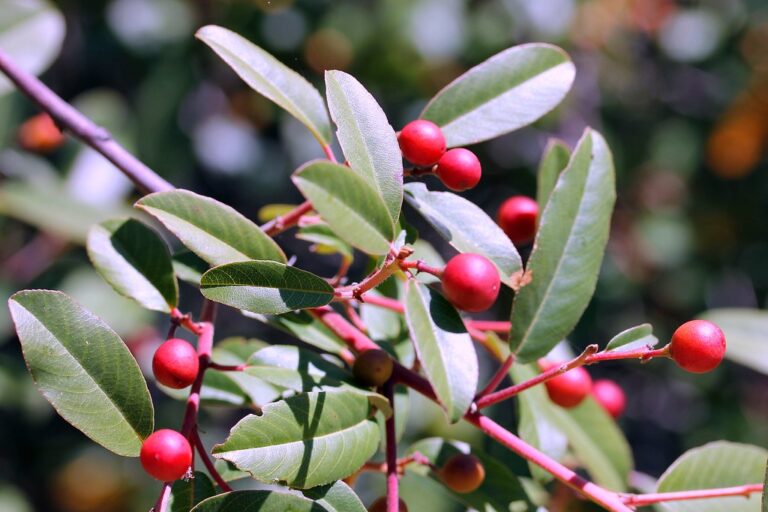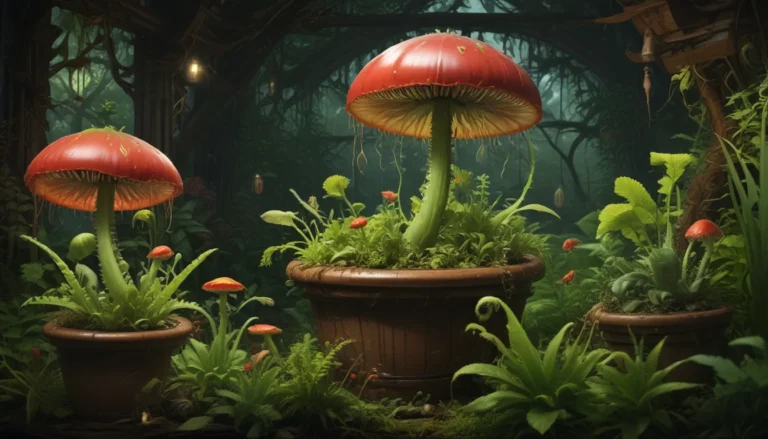Grow 15 Tropical Herbs and Spices in Your Garden

When we think of tropical herbs and spices, our minds wander to sun-drenched exotic locations with vibrant, bold flavors that transport us with every bite. These unique seasonings can add a whole new dimension to your culinary creations and help you replicate the flavors of your favorite restaurant dishes right at home.
Many of these tropical delights may not be readily available at your local supermarket, making them even more special when you can grow them right in your own garden. Whether you reside in a tropical paradise or a temperate zone, expanding your herb garden to include some of these heat-loving plants can open up a world of new possibilities.
Let’s delve into 15 different tropical herbs and spices that you can grow at home, each offering a distinct and flavorful addition to your garden and kitchen.
1. Cardamom
True cardamom (E. cardamomum), a member of the ginger family, boasts long, green leaves and produces delightful cardamom seed pods used as a spice. Whether you use it in savory Indian dishes or sweet baked goods, cardamom adds a unique and exotic flavor.
- Zone: USDA Hardiness Zones 10-13
- Growing Tips: Dappled sunlight, consistently moist soil, and can be grown indoors as a houseplant.
2. Cuban Oregano
Cuban oregano (Coleus amboinicus) is a surprising addition to the tropical herb family, with mint-like leaves that can add a punch to your dishes. This herb thrives in partial shade and is perfect for seasoning sofrito, pasta dishes, and Tex-Mex cuisine.
- Zone: USDA Hardiness Zones 9-11
- Growing Tips: Partial shade, morning sun, afternoon shade, and can be propagated via live plants.
3. Culantro
Not a typo, culantro (Eryngium foetidum) is a tropical herb with a similar flavor to cilantro but thrives in hot, humid weather. With long, narrow leaves and serrated edges, culantro adds depth to Asian or Latin American dishes.
- Zone: USDA Hardiness Zones 7-11
- Growing Tips: Part shade, moderately moist soil, and can be grown from seeds.
4. Curry Leaf Tree
The leaves of the curry leaf tree (Murraya koenigii) are a common seasoning in Indian cuisine, offering a unique citrus-like flavor. Easy to care for and perfect for South and Southeast Asian dishes, this tropical herb can add character to your cooking.
- Zone: USDA Hardiness Zones 9-12
- Growing Tips: Full sun, well-drained soil, and start sparingly harvesting at one year old.
5. Galangal
Galangal (Alpinia galanga), also known as Thai ginger, provides a citrusy flavor perfect for Thai and Vietnamese dishes. With long leaves and a preference for moist soil, galangal is a staple in Cambodian, Malaysian, Thai, and Vietnamese cuisine.
- Zone: USDA Hardiness Zones 9-12
- Growing Tips: Part shade, full sun in milder climates, and harvested rhizomes after three months.
6. Ghost Pepper
For those who like it hot, the ghost pepper (Capsicum assamicum) offers over a million Scoville heat units of intense spiciness. Perfect for adding heat to your dishes, grow these tropical peppers in hot, humid conditions and handle with caution.
- Zone: USDA Hardiness Zones 8-11
- Growing Tips: Full sun, well-drained soil, and expect harvest in 120-150 days.
7. Ginger
Ginger (Zingiber officinale), the versatile tropical spice, adds flavor to a variety of dishes from stir-fries to baked goods. With edible rhizomes commonly known as ginger root, this herb can be grown indoors or outdoors for year-round use.
- Zone: USDA Hardiness Zones 9-12
- Growing Tips: Part shade, moist soil, and ready for harvest in 8-10 months.
8. Green Peppercorn
While black peppercorns are a kitchen staple, green peppercorns offer a fresh and unique taste that’s not commonly found in supermarkets. Named for their fresh form, these peppercorns are perfect for adding a touch of freshness to your dishes.
- Zone: USDA Hardiness Zones 10-11
- Growing Tips: Part sun, well-drained soil, and expect fruit after 4-5 years.
9. Lemongrass
If you love citrus flavors, lemongrass (Cymbopogon citrates) offers a refreshing addition to your garden. Easy to grow and perfect for Asian cuisines, this herb thrives in full sun and moist, well-drained soil.
- Zone: USDA Hardiness Zones 8b-11b
- Growing Tips: Full sun, well-drained soil, and ready for harvest in 75-100 days.
10. Shiso
Shiso (Perilla frutescens), also known as perilla, adds a unique and versatile flavor to your dishes. With leaves that can be used in a variety of ways, this herb is perfect for Asian-style salads or noodle dishes.
- Zone: USDA Hardiness Zones 10-11
- Growing Tips: Full sun or part shade, well-drained soil, and harvest leaves sparingly once established.
11. Star Anise
For a beautiful addition to your garden, consider growing star anise (Illicium verum). With seed-filled fruits that are dried and used as a spice, this tropical tree offers a striking visual appeal along with its unique flavor.
- Zone: USDA Hardiness Zones 8-11
- Growing Tips: Light shade, well-drained soil, and start harvesting at five years of age.
12. Thai Lime
Thai lime (Citrus hystrix), also known as makrut lime, offers both leaves and fruits that can be used to season your dishes. With a distinct aroma, this citrus tree is perfect for adding flavor to a variety of cuisines.
- Zone: USDA Hardiness Zones 9-11
- Growing Tips: Full sun, moist, well-drained soil, and water when soil is dry.
13. Turmeric
As a versatile spice and supplement, turmeric (Curcuma longa) offers a range of health benefits along with its culinary uses. With eye-catching flowers and edible rhizomes, this super spice can be grown in containers for those in cooler climates.
- Zone: USDA Hardiness Zones 8-11
- Growing Tips: Full or part sun, well-draining soil, and harvest rhizomes after 7-10 months.
14. Vanilla
Grown on tropical orchids, vanilla (Vanilla planifolia) pods offer a whole new level of flavor when used fresh. Perfect for those with greenhouses or warm, humid conditions, this spice is a luxurious addition to any garden.
- Zone: USDA Hardiness Zones 10a-11a
- Growing Tips: Dappled sunlight, trellising, and allow time for establishment before harvesting.
15. Vietnamese Cilantro
Vietnamese cilantro (Persicaria odorata), also known as rau ram, adds a sharp and flavorful touch to your dishes. Perfect for those in USDA Zones 9b-12b, this herb can be used sparingly to enhance the flavors of your cooking.
- Zone: USDA Hardiness Zones 9b-12b
- Growing Tips: Part shade, moist, well-drained soil, and treat as a perennial.
With these 15 tropical herbs and spices in your garden, the possibilities for flavorful dishes are endless. From exotic cardamom to fiery ghost peppers and fragrant vanilla, each plant offers a unique and exciting addition to your culinary creations. So why not take your taste buds on a tropical adventure and start growing these lush seasonings in your garden today!





